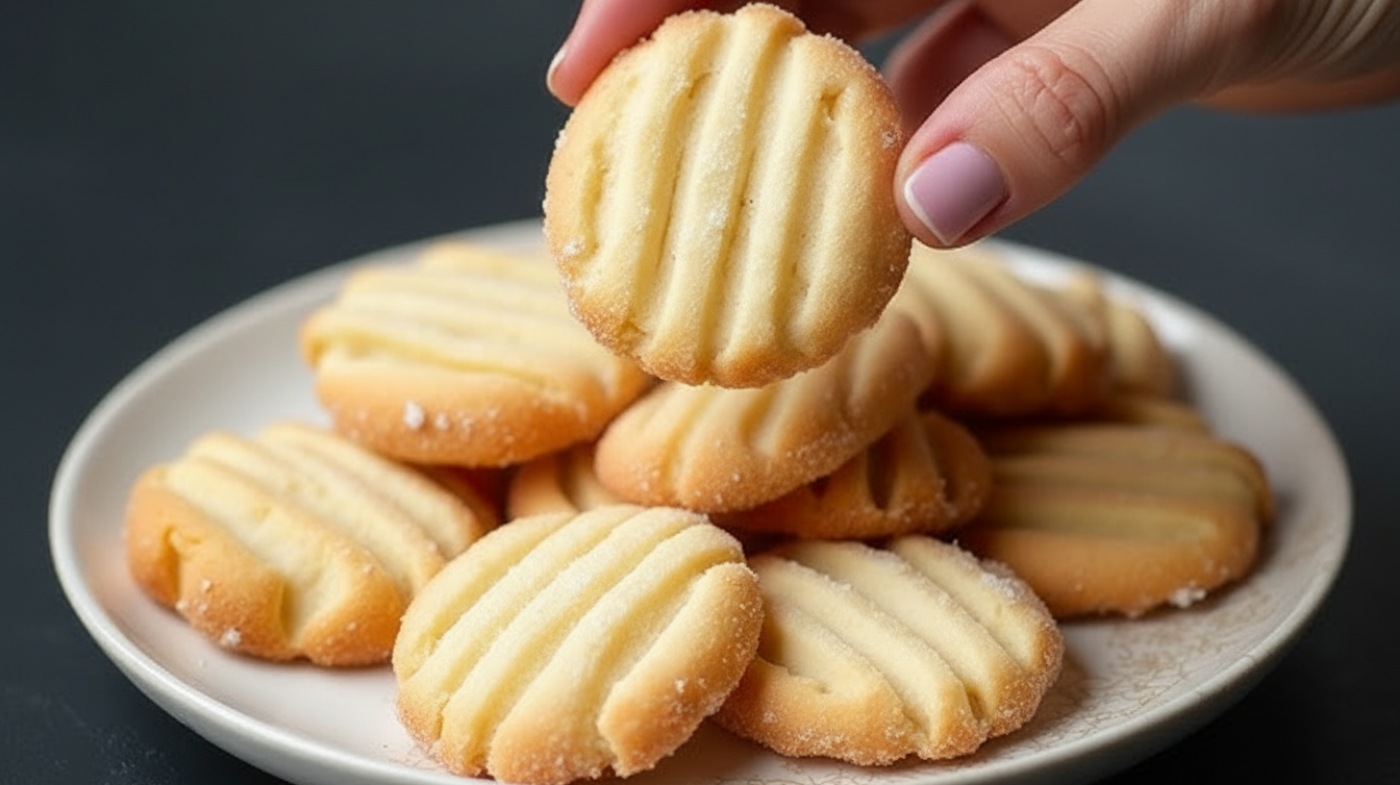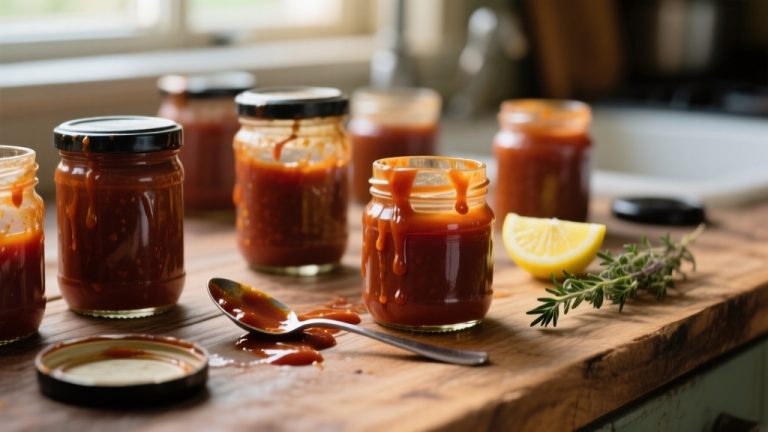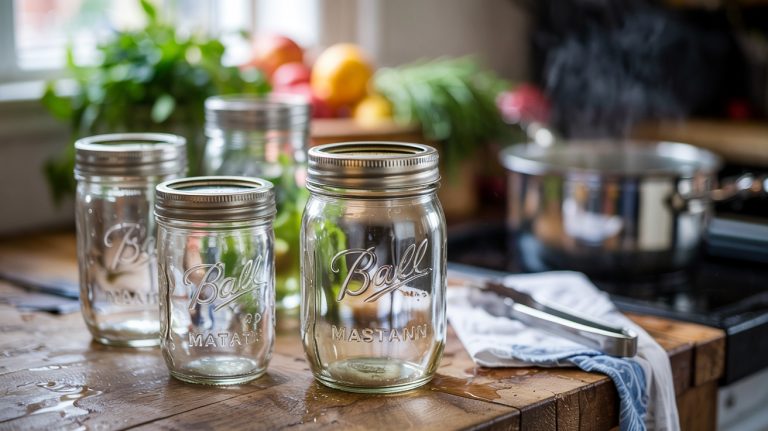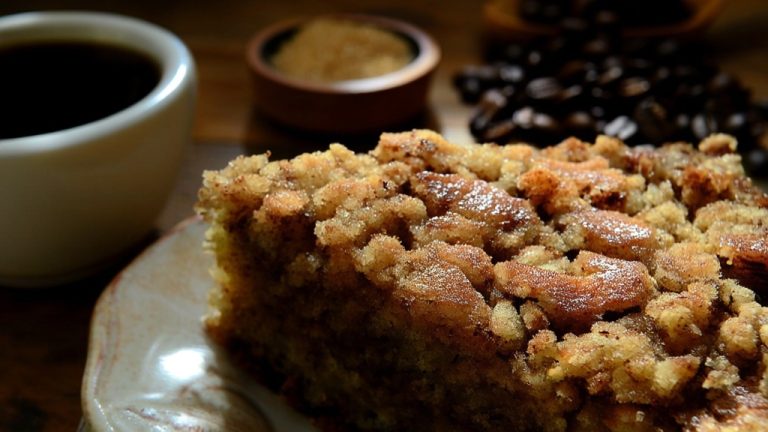Can You Make Biscuits Without Butter? Easy Flavorful Ways
Yes, you can make tasty biscuits without butter by using alternatives like chilled coconut oil, vegan butter, or even olive oil.
These substitutes help you reduce saturated fat, accommodate dietary needs such as dairy allergies or vegan diets, and still create tender, flaky layers.
They usually measure 1:1 just like butter, but handle coconut oil carefully as it melts fast.
With the right ingredients and techniques, your biscuits will turn out delicious. Explore how to perfect them and add exciting flavors.
Key Takeaways
- Yes, biscuits can be made without butter by using substitutes like vegan butter, coconut oil, or vegetable oil for moisture and texture.
- Butter substitutes often measure 1:1, simplifying recipe adjustments while maintaining biscuit flakiness and tenderness.
- Using cold fats like chilled coconut oil or vegan butter helps create flaky layers similar to traditional butter biscuits.
- Non-dairy options such as nut butters, aquafaba, or plant-based oils accommodate allergies and support vegan baking.
- Proper handling, like avoiding overmixing and cutting dough cleanly, ensures tender, flaky biscuits without butter.
Benefits of Baking Biscuits Without Butter
When you bake biscuits without butter, you open the door to a range of health, dietary, and practical benefits that can enhance both your baking experience and the final product.
Without butter, your biscuits naturally contain less saturated fat, which supports better heart health by lowering cholesterol. They’re also perfect if you or your guests have dairy allergies or lactose intolerance, making your baking more inclusive.
Baking biscuits without butter means less saturated fat and a dairy-free option for everyone to enjoy.
Using oils or plant-based ingredients can help you create vegan biscuits and control calorie density, aiding weight management. Additionally, this minimalist ingredient approach reduces waste and simplifies inventory management, making baking more efficient. This technique shares similarities with the non-porous materials used in black kitchen sinks, which simplify maintenance and cleaning.
Plus, oil-based dough bonds faster, simplifying preparation and often speeding up baking.
The texture remains tender and flaky, while the neutral flavor lets your chosen spices or herbs shine.
This approach also reduces the risk of burning butter, ensuring consistent, delicious results every time.
Popular Butter Substitutes in Biscuit Recipes
Choosing the right butter substitute can make all the difference in your biscuit baking, especially when aiming for specific textures and flavors without dairy. Proper preparation and maintenance of tools can also enhance your baking results.
If you want flaky layers, cold vegan butter or chilled coconut oil works best. For moist, fluffy biscuits, liquid oils like olive or vegetable oil shine. Nut butters add unique flavor but are less common in biscuits. Keeping fats cold is essential to prevent melting and to ensure the flakiness of the biscuits.
| Substitute Type | Texture Impact | Flavor Profile |
|---|---|---|
| Cold Vegan Butter | Flaky, layered | Buttery, mild |
| Olive/Vegetable Oil | Moist, soft | Neutral to fruity |
| Coconut Oil (solid) | Flaky, firm | Slight coconut taste |
With these options, you can tailor your biscuits’ texture and taste perfectly without butter.
Essential Ingredients for Butter-Free Biscuits
Although butter plays a key role in traditional biscuits, you can create tender, flavorful biscuits without it by carefully selecting your ingredients.
Start with all-purpose flour for balanced structure and tenderness, or blend it with whole wheat flour for added nutrition. Choosing fresh, quality ingredients ensures better texture and flavor.
Begin with all-purpose flour for perfect texture, or mix in whole wheat for a nutritious boost.
Use baking powder and baking soda combined with acidic plant milks like almond or soy mixed with vinegar to achieve a light rise.
For moisture and fat, consider mayo, vegan mayo, or almond flour to replicate butter’s richness. Almond flour is essential as it provides the necessary fat without added oil or vegan butter, making it ideal for low-fat, oil-free recipes.
Salt enhances flavor while stabilizing dough, and a touch of sugar promotes browning and subtle sweetness.
Cold water or acidified plant milk hydrates your dough, ensuring proper consistency. Similar to the importance of proper blanching techniques, precise hydration helps achieve the desired biscuit texture.
Techniques for Achieving Perfect Texture Without Butter
Mastering biscuit texture without butter means relying on smart techniques that balance moisture, fat, and handling.
Start by choosing alternative fats like olive oil or heavy cream, which add tenderness and flakiness. Using olive oil as a substitute for traditional vegetable oil can impart a distinct flavor and richness.
Layer your dough by stacking and rolling gently to create flaky layers without overworking it. Too much handling toughens biscuits.
Use self-rising flour and the right amount of baking powder to ensure a light rise.
Keep baking temperatures high (450–500°F) for quick rise and browning.
Cut biscuits cleanly without twisting to preserve layers.
Incorporate moist ingredients like yogurt or honey to maintain hydration, preventing dryness. Mixing oil and milk separately before combining can help achieve the right dough consistency.
Finally, brushing the tops with cream or oil before baking enhances surface crispness and color, giving you perfectly textured biscuits without butter.
Flavor Variations and Customizations in No-Butter Biscuits
When you skip butter in your biscuits, you open up a world of flavor possibilities that can transform each batch into a unique culinary experience.
You can sweeten dough with maple syrup or vanilla Greek yogurt, or add almond butter for a nutty touch.
Honey or maple syrup make delightful toppings, while sea salt or grated cheese enhance savory versions. Choosing the right material durability for your mixing bowls can also affect the ease of preparation and cleanup.
For a citrus twist, try lemon or orange zest, or lime juice for a tropical flair.
Don’t hesitate to mix in herbs like chives or spices such as cinnamon or turmeric to deepen flavor.
Adding corn offers a subtle sweetness and color.
Using Greek yogurt as the key dairy ingredient ensures a naturally tangy flavor and helps achieve a fluffy texture without butter.
Dietary Considerations and Suitable Butter Alternatives
When you’re whipping up some biscuits and want to skip the butter, it’s all about picking the right dairy-free alternative. Trust me, it can really change the game in terms of taste and texture! Preparing your ingredients with the right tools and techniques can make a big difference in the final product, much like how appliance dollies ease moving large items.
You’ve got some great options out there, like refined coconut oil or avocado oil. These choices are fantastic because they cater to various dietary needs and help keep your biscuits nice and moist. Since butter is a dairy product, choosing a dairy-free substitute is essential for those avoiding dairy.
But hey, just a little heads up—if you’re thinking about using nut butters or coconut-based fats, make sure to keep allergies in mind. You want everyone to enjoy your delicious treats without any worries, right?
Dairy-Free Butter Options
Choosing the right dairy-free butter alternative can make all the difference in your biscuit baking, especially if you’re catering to dietary restrictions like veganism, lactose intolerance, or dairy allergies.
Refined coconut oil is fantastic, offering a semi-solid texture similar to butter without coconut flavor. It’s perfect for flaky biscuits. It is important to note that refined coconut oil can liquefy quickly if worked too long or exposed to high temperatures.
Vegan butter sticks like Miyoko’s or Violife work well too, but watch for added salt that might affect seasoning.
Olive and avocado oils bring subtle flavors but suit recipes where melted butter is called for.
Remember, most substitutes measure 1:1, but coconut oil’s quick melting means you should handle it chilled.
Avoid watery vegan spreads, as they can change your dough’s consistency.
Allergy-Friendly Fat Alternatives
Although traditional butter plays a key role in biscuit texture, you don’t have to rely on dairy fats to achieve flaky, tender results.
For allergy-friendly fat alternatives, refined coconut oil is perfect. It’s neutral in taste and mimics butter’s texture when chilled.
Plant-based oils like avocado or olive oil add moisture and subtle flavors, ideal for savory or mild biscuits.
Nut and seed butters such as almond, cashew, or sunflower seed butter provide rich fats and binding properties, great for those avoiding dairy and certain nuts.
Legume-based options like aquafaba or pureed chickpeas help emulsify and add moisture, enhancing dough structure.
Many allergy-friendly recipes also benefit from insulated linings that maintain ingredient freshness during preparation and storage.
Frequently Asked Questions
Can I Freeze Butter-Free Biscuits for Later Use?
Yes, you can freeze butter-free biscuits for later use.
Shape and flash freeze unbaked dough on a baking sheet before storing in airtight bags. You can also freeze fully baked biscuits after they’ve cooled.
When ready, bake unbaked biscuits directly from frozen or reheat baked ones in the oven to maintain texture.
Proper wrapping and freezing at 0°F help preserve freshness for up to 2-3 months without sacrificing quality or flavor.
How Do Butter-Free Biscuits Compare Nutritionally to Traditional Biscuits?
Butter-free biscuits cut saturated fat and cholesterol, unlike traditional ones loaded with butter’s rich fats.
You’ll notice calories often drop from around 230 to 178 per serving, depending on substitutes.
Carbs and protein stay similar, but butter-free versions may lack vitamin A unless fortified.
They might gain vitamin E from plant oils, too.
Are Butter-Free Biscuits Suitable for High-Altitude Baking?
Yes, you can bake butter-free biscuits at high altitude, but you’ll need to tweak your recipe.
You’ll want to reduce baking powder, increase liquids, and raise oven temperature slightly to prevent dryness and collapsing.
Using cold non-dairy fats helps mimic butter’s texture, while careful folding preserves flakiness.
With these adjustments, your biscuits can turn out tender and fluffy, even without butter and despite the challenges of baking in thin air.
What Is the Best Storage Method for No-Butter Biscuits?
You’ll want to store no-butter biscuits like they’re precious gold. First, let them cool completely on a wire rack to dodge sogginess.
Keep them in airtight bags or wraps, squeezing out as much air as possible to lock in freshness without drying them out.
For longer storage, freeze unbaked dough or baked biscuits in sealed containers.
When ready, gently reheat to revive softness without turning them into hockey pucks.
Can I Use Gluten-Free Flour to Make Biscuits Without Butter?
Yes, you can use gluten-free flour to make biscuits without butter. Just choose a blend that includes starches like potato or tapioca to mimic wheat’s texture.
Adding almond flour helps provide fat and moisture, preventing dryness. Replace butter with oils, vegan butter, or yogurt for tenderness.
Mix gently and bake at a high temperature for a fluffy, tender biscuit.
You’ll enjoy a delicious, dairy-free option that’s just as satisfying.
Take Your Biscuit Baking Further With Smart Butter Alternatives
Baking biscuits without butter doesn’t mean sacrificing flavor or texture. It’s like painting with a new palette, opening up fresh possibilities.
By choosing the right substitutes and mastering simple techniques, you can create tender, flaky biscuits that suit your taste and dietary needs.
So, don’t hesitate to experiment and customize your recipes. With a little creativity, your no-butter biscuits will rise to the occasion, delivering comfort and delight in every bite.







